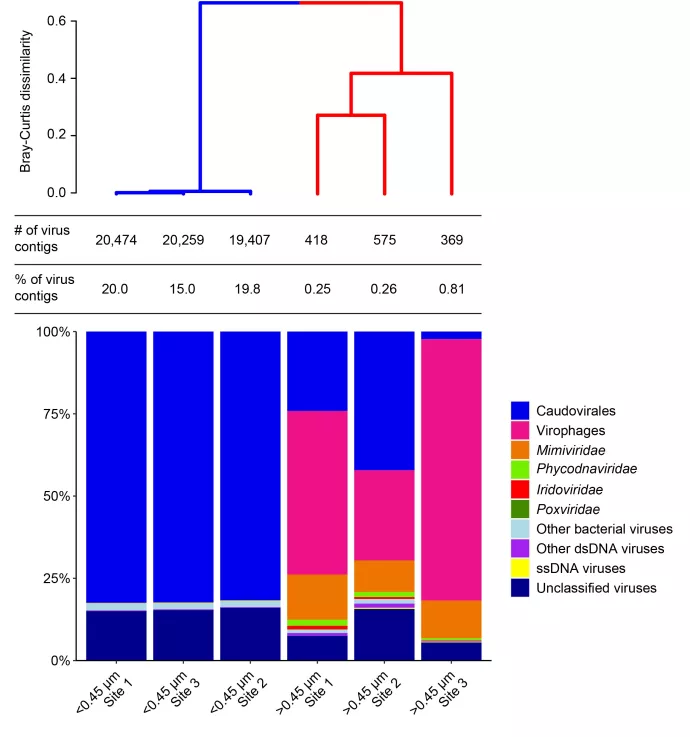
Christine Palermo (PhD student, Short Lab)'s Paper in Applied and Environmental Microbiology
Christine Palermo (PhD student), Short Lab, publishhed last month the paper: Analysis of different size fractions provides a more complete perspective of viral diversity in a freshwater embayment, in Applied and Environmental Microbiology
Christine explained that:
"Inspired by recent discoveries of the prevalence of large viruses in the environment, we re-assessed the longstanding approach of filtering water through small pore-size filters to separate viruses from cells before metagenomic analysis. We collected samples from three sites in Hamilton Harbour, an embayment of Lake Ontario, and studied 6 datasets derived from < 0.45 μm and > 0.45 μm size fractions to compare the diversity of viruses in these fractions. At the level of virus order/family we observed highly diverse and distinct virus communities in the > 0.45 μm size fractions, whereas the < 0.45 μm size fractions were comprised primarily of Caudovirales. The relative abundances of Caudovirales for which hosts could be inferred varied widely between size fractions with higher relative abundances of cyanophages in the > 0.45 μm size fractions potentially indicating replication within cells during ongoing infections. Many viruses of eukaryotes, such as Mimiviridae, Phycodnaviridae, Iridoviridae and Poxviridae were detected exclusively in the often disregarded > 0.45 μm size fractions. In addition to observing unique virus communities associated with each size fraction from every site we examined, we detected viruses common to both fractions suggesting that these are candidates for further exploration because they could be the product of ongoing or recent lytic events. Most importantly, our observations indicate that analysis of either fraction alone provides only a partial perspective of dsDNA viruses in the environment, highlighting the need for more comprehensive approaches for analyzing virus communities inferred from metagenomic sequencing.
IMPORTANCE Most studies of aquatic virus communities analyze DNA sequences derived from the smaller, "free virus" size fraction. Our study demonstrates that analysis of virus communities using only the smaller size fraction can lead to erroneously low diversity estimates for many of the larger viruses such as Mimiviridae, Phycodnaviridae, Iridoviridae, and Poxviridae, whereas analyzing only the larger, > 0.45 μm size fraction can lead to underestimates of Caudovirales diversity and relative abundance. Similarly, our data shows that examining only the smaller size fraction can lead to underestimations of virophage and cyanophage relative abundances that could, in turn, cause researchers to assume their limited ecological importance. Given the considerable differences we observed in this study, we recommend cautious interpretations of environmental virus community assemblages and dynamics when based on metagenomic data derived from different size fractions."

